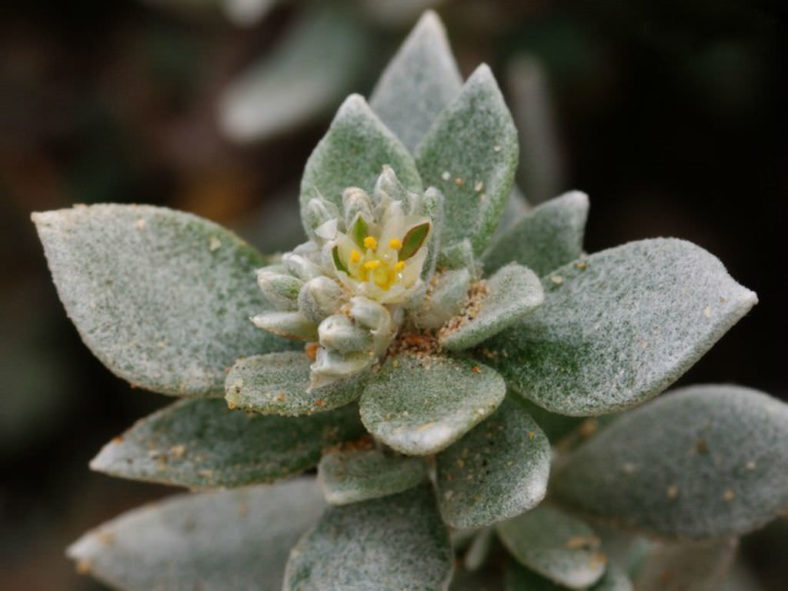Polycarpaea nivea, commonly known as Common White Saladillo, is a species that belongs to the Caryophyllaceae family. It is a woody, dense, cushion-forming subshrub native to Mauritania, Morocco, the Canary Islands, and Cape Verde. Its leaves are small, strongly succulent, silvery or rarely brownish, and densely hairy with acute to rounded apices.
This species was described by William Aiton in 1828 as Achyranthes nivea, later placed under Polycarpaea by Philip Barker Webb around 1840.
The specific name "nivea" comes from the Latin meaning "white like the snow," referring to the color of the plant.
Growing Conditions and General Care
This plant is a coastal xerophyte, growing in extremely arid to arid areas of several islands, typically on more or less compacted dunes close to the sea but also in coastal cliffs and stony coastal plains. It is also found in sub-humid to humid mountain areas. In the Canary Islands, it forms psammophyte communities with Convolvulus caput-medusae and Heliotropium bacciferum subsp. erosum, Zygophyllum fontanesii (Tetraena fontanesii), and Euphorbia paralias.

Polycarpaea nivea is a low-growing plant seldom seen in cultivation. Nevertheless, it has been used extensively and successfully in sand-binding experiments on dunes.
Links
- Back to genus Polycarpaea
- Succupedia: Browse succulents by Scientific Name, Common Name, Genus, Family, USDA Hardiness Zone, Origin, or cacti by Genus